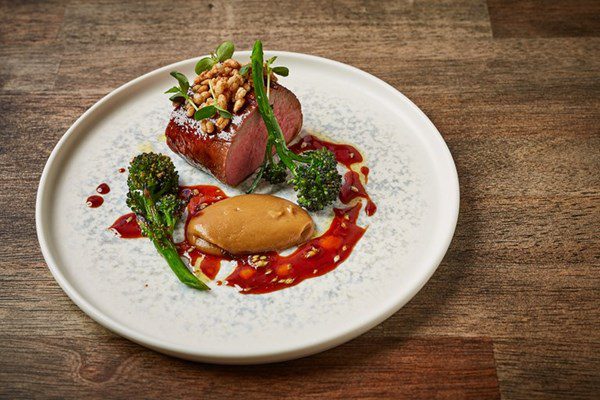Why you should rethink veal
May 30, 2024 by DarcieAlmost as long as there has been a dairy industry, veal has been a byproduct of it. Male calves are not useful to dairy farmers, and people realized that the immature males made a delicious, tender meat. However, for decades veal’s reputation, especially in the US, has been stained by the mistreatment of the animals. In the past couple of decades, a new kind of veal – rose veal (also known as rosé veal) – has been rehabilitating that image, as it purports to be a much more ethical way to produce the product. Saveur dives into this topic, and explains why veal skeptics might want to give the meat a second look.

Rose veal has been widely known in Europe for decades but is a nascent product in the United States. Its name derives from the color of the meat – not as pale as the veal made from crated, shackled, and malnourished animals that dominate the market – but also not as red as meat from mature cows and steers. The meat attains more color because the calves are not confined to crates and “live their happy, albeit short, lives with their mothers on pastures eating a diet of milk, grass, and sometimes grain.”
While rose veal is considered a more ethical meat than traditional veal, it hasn’t caught on in the US where the stigma surrounding veal persists – as do the poor conditions that remain in place for most veal produced there. Only a portion of states have outlawed the practice of crating veal, and those bans affect a mere 13% of veal production in the states. By contrast, the UK outlawed crates in the 1990s, and the EU followed suit in 2006. Animal rights activists still have some concerns about the welfare of the calves, but rose veal is undoubtedly more humane. And as long as we have a large dairy industry, veal will be necessary, as it is not feasible to raise all of the unwanted calves to maturity.
It isn’t surprising that the recipes in the EYB Library for rose veal (99 recipes) mainly come from the UK, as the product has been more widely available there. One example is the Sous vide rose veal fillet with onion and beer purée, barley and broccoli from Great British Chefs pictured above. You can use rose veal in any regular veal recipe as it is nearly as tender as the industrial variety. If you live in a major metropolitan area, you can probably find it as specialty butcher shops, and if you live in a rural area that has any dairy industry, you can probably find it at local farms. I did a quick online search for rose veal and found about a dozen Twin Cities locations that offered it, plus some smaller farms in outlying areas.
Categories
- All Posts (6940)
- Antipasto (2135)
- Author Articles (247)
- Book News (935)
- Cookbook Giveaways (983)
- Cookbook Lovers (257)
- Cooking Tips (109)
- Culinary News (299)
- Food Biz People (552)
- Food Online (791)
- Holidays & Celebrations (272)
- New Cookbooks (149)
- Recipes (1500)
- Shelf Life With Susie (231)
- What's New on EYB (133)
Archives
Latest Comments
- eliza on What foods do you look forward to the most for each season?
- kmwyman on Rooza by Nadiya Hussain – Cookbook Review and Giveaway
- Maryd8822 on The Golden Wok – Cookbook Giveaway
- Dendav on Danube Cookbook Review and Giveaway
- sanfrannative on Rooza by Nadiya Hussain – Cookbook Review and Giveaway
- darty on Danube Cookbook Review and Giveaway
- Atroyer7 on Danube Cookbook Review and Giveaway
- demomcook on What foods do you look forward to the most for each season?
- demomcook on Danube Cookbook Review and Giveaway
- Darcie on How cookbooks can help build resilience